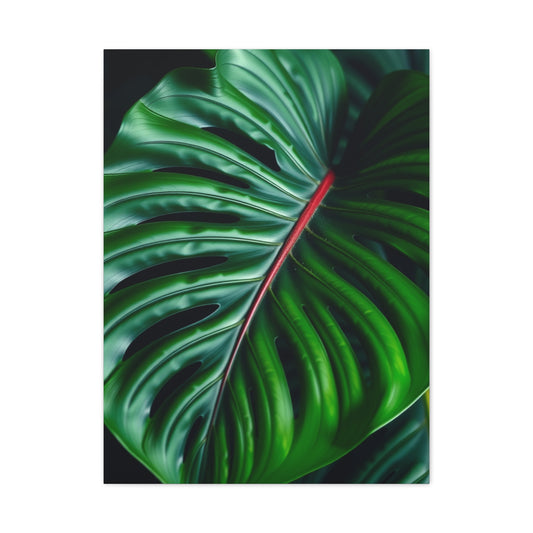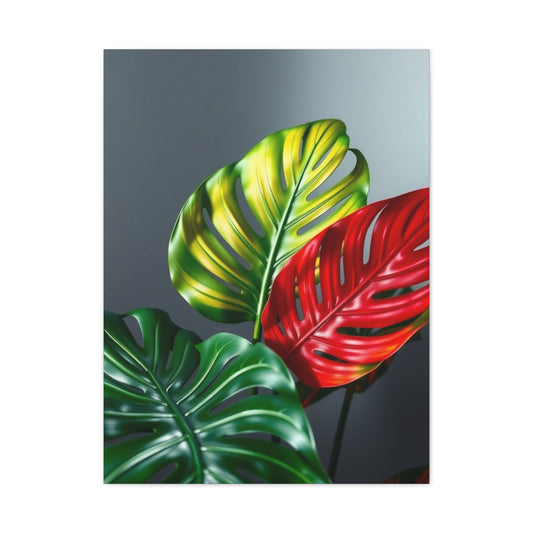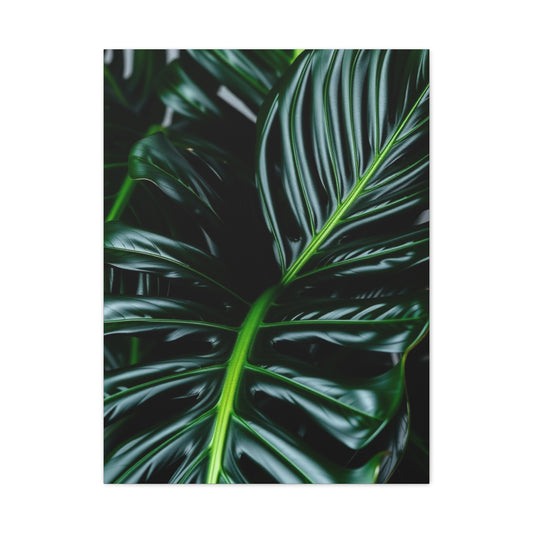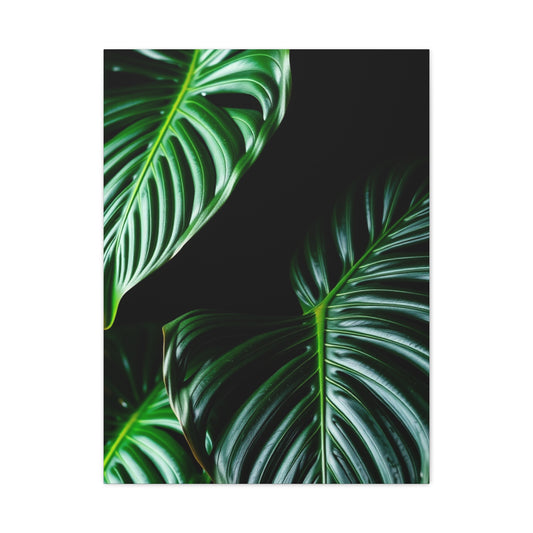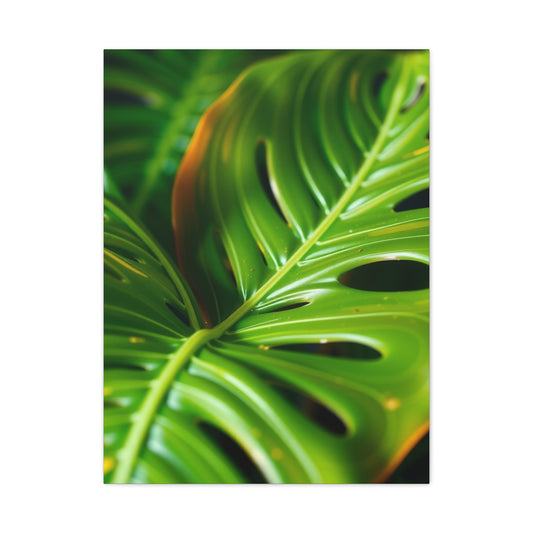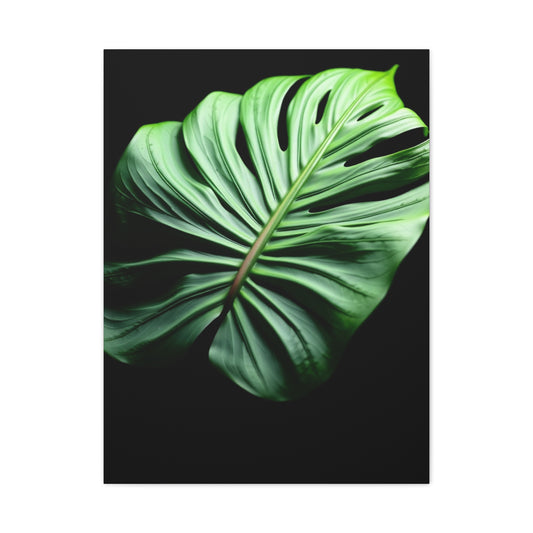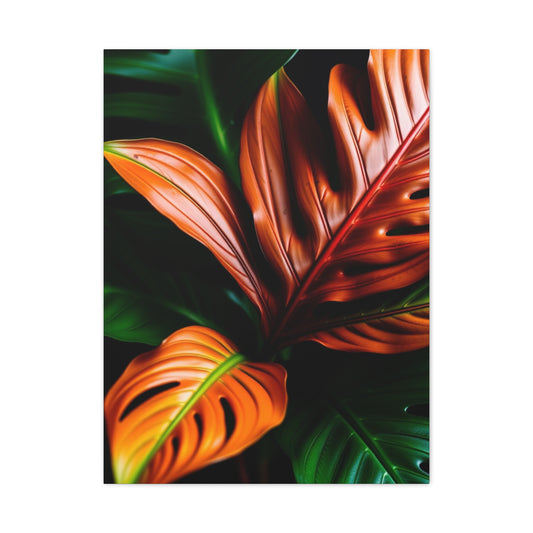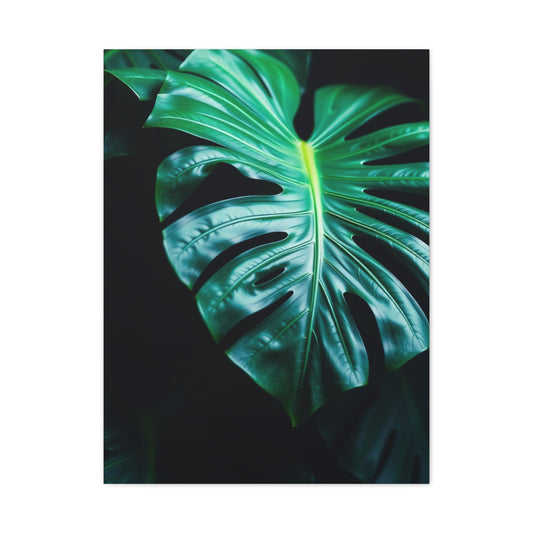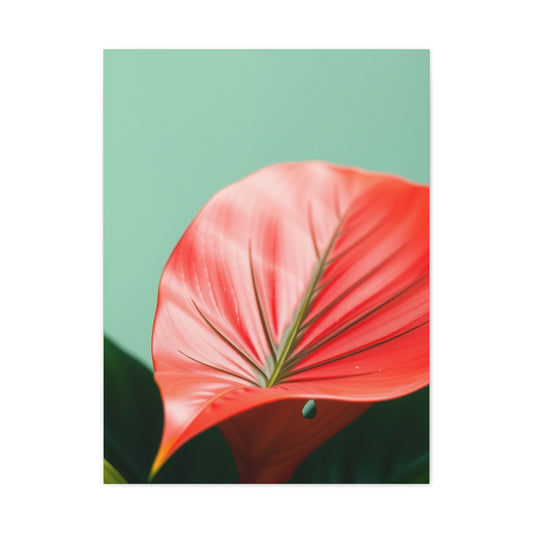Monstera Leaf Inspired Collage Wall Art
The idea of turning simple scraps of paper into wall art might sound unassuming at first, but it carries with it an immense power of transformation. A single Monstera leaf, when reimagined through a collage of torn or cut textures, can shift the mood of a room from ordinary to enchanting. This DIY approach combines creativity, sustainability, and playfulness in a way that makes it accessible to anyone, regardless of artistic training. It is more than a craft; it is a conversation between everyday materials and imagination. When carefully placed against a painted canvas, a paper Monstera leaf becomes an emblem of tropical elegance, radiating freshness into the home. The project encourages experimentation with colors, layers, and shapes, while at the same time reviving discarded magazines or wrapping paper that would otherwise be forgotten. Each cut, each glued piece, and each overlapping shade tells its own quiet story.
What makes this practice so magnetic is its adaptability. Children can participate in the process by cutting shapes and arranging fragments, while adults can use the same technique as a meditative exercise after a long day. The leaf itself is iconic, instantly recognizable with its deep cuts and fenestrations, yet forgiving enough for beginners to sketch without worry of precision. The outcome is not a mass-produced decoration but a one-of-a-kind wall art piece that bears the fingerprints of its maker. This uniqueness is what turns a craft project into a statement of personal style.
Historical Background
Collage as an art form has deep roots that trace back to ancient times, when artisans would assemble fragments of colored stones, ceramics, or fabric into decorative mosaics. In its modern sense, collage became a celebrated movement in the early twentieth century with pioneers like Georges Braque and Pablo Picasso experimenting with pasted papers, newsprint, and textures to challenge conventional painting. Their explorations opened the door to a genre where layering and juxtaposition were not mistakes but deliberate techniques that created new meanings. From political posters to avant-garde compositions, collage became a language of both rebellion and reinvention.
In the context of domestic crafts, collage entered households as an affordable and engaging way to adorn walls without requiring expensive supplies. During the mid-century decades, magazines and printed advertisements provided a wealth of material for families to cut, paste, and reshape into art. This culture of reusing and reshaping is echoed today in DIY Monstera leaf wall art, which draws upon the collage tradition but focuses on a natural motif that has universal appeal. The Monstera plant itself carries a symbolic background, too. Indigenous cultures of Central America, where the plant is native, often associated its perforated leaves with vitality and endurance. Over time, its exotic appearance traveled globally, finding its way into textiles, wallpapers, and modern décor trends. By merging the plant’s cultural symbolism with the collage technique’s historical journey, the humble DIY project acquires surprising depth.
Core Concepts and Foundations
At the foundation of Monstera leaf collage wall art lies the balance between texture, shape, and harmony. Unlike painting, where brushstrokes flow seamlessly, collage thrives on fragments—imperfect, angular, and diverse. This fragmented beauty is what allows an ordinary leaf to be reinterpreted endlessly. Each scrap of paper contributes its own personality, whether it comes from a glossy magazine page, a matte piece of wrapping paper, or even hand-painted strokes on recycled material. The layering process produces a subtle three-dimensional effect, catching light in unexpected ways and bringing dynamism to flat surfaces.
Color theory plays an understated yet crucial role. The Monstera leaf, typically green in nature, gives room for variations. One may choose to stay true to botanical hues, assembling emerald, lime, and olive tones. Another may drift into creative abstraction, merging blues, purples, or even metallics. This freedom reflects the foundation of collage as a medium that does not demand replication but encourages interpretation. Texture also adds richness. Smooth magazine prints contrast beautifully with rougher paper, while small rips at the edges introduce organic irregularities reminiscent of the plant’s natural veins.
Another cornerstone of this practice is accessibility. The tools required—scissors, glue, canvas, and paper scraps—are everyday objects, often already present in households. This removes barriers and reinforces the concept of wall art as something anyone can create, not just purchase. More importantly, the act of making fosters mindfulness. Cutting, arranging, and gluing become rhythmic, almost meditative, offering a pause from digital distractions. In this way, the project connects art-making with wellness.
Types and Categories
Though the Monstera leaf collage may begin with a single canvas and a recognizable shape, the variations are endless. One category of approach focuses on fidelity to nature. In this version, crafters seek to replicate the natural structure of the leaf, carefully cutting symmetrical holes and aligning green shades to mimic the botanical appearance. This appeals to those who admire realism and wish their wall art to carry the calming presence of indoor plants.
A second category embraces abstraction. Here, the Monstera serves more as inspiration than template. Leaf outlines may be exaggerated, elongated, or fragmented into geometric sections filled with unexpected colors. Instead of strictly using greens, vibrant pinks, fiery oranges, or oceanic blues may dominate the collage, transforming it into a statement of individuality rather than imitation.
Another intriguing category emerges from layering and repetition. Instead of a single leaf, multiple overlapping Monstera silhouettes may be collaged together, forming a dense jungle-like composition. This approach produces a mural-like effect, suitable for larger walls where boldness is welcome. A more delicate variation involves miniatures: several small canvases, each with a differently styled Monstera leaf, displayed together as a gallery wall.
Collage also lends itself to thematic adaptation. Some choose to integrate text cutouts, blending words from magazines into the leaf, adding poetic or humorous undertones. Others introduce metallic foil, patterned tissue paper, or painted scraps to elevate the tactile quality. This categorization shows that while the framework is simple, the artistic permutations are boundless, accommodating every taste from minimalist to maximalist.
Practical Applications
The true beauty of Monstera leaf collage wall art lies in its practical versatility. At its simplest, it becomes an affordable piece of home décor, breathing life into blank walls. For apartments or dorm rooms, where large-scale decoration may be limited, a single vibrant canvas with a collaged Monstera leaf introduces personality without overwhelming the space. In more curated interiors, it can serve as part of a thematic collection, complementing tropical-inspired furniture, woven baskets, or ceramic planters.
Beyond decoration, this form of wall art has educational value. For children, the process of cutting and gluing develops fine motor skills, while the exploration of shapes teaches spatial awareness. Schools and workshops often use collage projects to encourage teamwork, with groups assembling larger leaves from individual contributions. The activity sparks creativity without demanding perfection, which makes it particularly inclusive for diverse age groups and abilities.
From a sustainability perspective, this project embodies eco-conscious design. By repurposing paper scraps and old magazines, creators divert materials from waste streams, echoing the modern emphasis on upcycling. This not only benefits the environment but also nurtures a deeper awareness of resourcefulness. Displaying the final piece becomes a quiet declaration of sustainable living, showing that beauty can emerge from discarded fragments.
There is also a therapeutic dimension. Art therapists often highlight collage as a tool for emotional expression, as tearing and arranging fragments can mirror inner feelings. The Monstera leaf, with its bold presence, may symbolize growth, renewal, or resilience, resonating with individuals on a personal level. Hanging such a collage on a wall thus becomes more than décor; it is an affirmation of creativity, healing, and self-expression.
Techniques and Methods
The process of crafting a Monstera leaf collage for wall art may appear straightforward, yet within it lies an array of techniques and subtle methods that determine the outcome. Every stage, from the initial sketch to the final sealing, offers an opportunity to experiment and refine. The most foundational method begins with the careful preparation of the canvas. A single layer of paint sets the background tone, but the surface can also be primed with textured strokes, sponged effects, or even layered colors to create depth before the first piece of paper is glued down. This background acts almost like an atmosphere, setting the mood against which the Monstera leaf will emerge.
Cutting and shaping paper is the heart of the craft, and different approaches yield vastly different results. Some artisans prefer tearing paper by hand, letting rough, irregular edges bring an organic feel that echoes the natural imperfections of real leaves. Others lean towards precision, using sharp scissors or craft knives to achieve clean shapes that interlock seamlessly. A hybrid technique involves beginning with rough cuts for larger spaces and then trimming smaller edges for refinement. This duality between ruggedness and exactness captures the essence of collage itself.
Arranging fragments requires more than random placement. An effective method is to treat each piece as a brushstroke, layering them to mimic the natural veining of the Monstera. Larger shapes are laid down first, forming a skeleton of the leaf, while smaller shards are layered over to mimic highlights and shadows. Overlapping fragments slightly ensures cohesion and prevents gaps that may weaken the overall visual impact. Another technique is to use variations in sheen. Glossy magazine pieces can contrast against matte wrapping paper, creating a dance of reflections when light strikes the surface.
The adhesive method also influences the final presentation. Traditional glue sticks offer control for beginners, but professionals often use a thin layer of liquid adhesive applied with brushes for even coverage. Mod Podge or similar sealants are invaluable not just for attaching but for finishing, as they create a protective layer that unifies the disparate textures. Some crafters experiment with layering multiple coats of sealant to achieve a smooth, almost varnished finish, while others prefer to let the collage remain slightly textured, inviting touch and interaction.
Beyond basic cutting and gluing, advanced methods include incorporating mixed media. A Monstera collage may be elevated with touches of acrylic paint, metallic foil, pressed leaves, or even fabric scraps integrated into the composition. These additions introduce tactile variety and narrative complexity. Another powerful method involves scale manipulation. A single large leaf can dominate the canvas, bold and striking, or numerous smaller leaves may be arranged like a cascading pattern, creating rhythm across the wall. This adaptability allows the technique to evolve with the maker’s vision, turning a simple craft into an ongoing exploration of possibilities.
Challenges and Common Mistakes
As with any creative practice, making Monstera leaf collage wall art presents its own set of challenges. While the steps may seem simple, small missteps can affect the balance and quality of the final piece. One of the most common mistakes lies in the preparation of paper scraps. Beginners sometimes cut pieces that are too uniform in shape or size, leading to a flat and repetitive appearance. The leaf loses its vibrancy if the fragments lack variation. To overcome this, one must deliberately mix sharp angles with softer curves, larger patches with smaller accents. Diversity in pieces creates rhythm, much like varied brushstrokes in painting.
Another challenge arises during the arrangement stage. Enthusiastic crafters often attempt to fill the leaf too quickly, gluing down pieces without stepping back to assess overall composition. This rush can result in uneven distribution of color, with one side of the leaf appearing overly dark or another section too sparse. A helpful practice is to temporarily position scraps without adhesive, allowing for adjustments before committing. This trial-and-error stage ensures harmony in the final pattern.
Adhesive problems are also common. Using too much glue can cause wrinkling or bubbling of the paper, while insufficient application may result in pieces lifting from the surface. To avoid this, glue should be spread thinly and evenly, with attention to edges. Applying pressure gently with fingers or a soft cloth helps pieces adhere smoothly. Patience during drying is equally important. Many mistakes occur when makers rush to apply sealant before the base glue has dried, trapping air pockets or causing smears.
Another pitfall lies in the drawing of the Monstera outline. Beginners may feel intimidated by its iconic slits and curves, fearing inaccuracy. Yet overcomplicating the shape or trying to make it too perfect often robs the collage of its organic character. A simpler outline, loosely sketched, often works best, as the collage pieces themselves will give the impression of natural intricacy once assembled.
Finally, the finishing stage can present difficulties. Applying Mod Podge or sealant unevenly creates streaks or milky patches. While these often clear upon drying, thick or inconsistent layers may leave marks. The key is to apply in thin, even strokes, building up coats gradually if necessary. A lack of patience during drying can also undermine the durability of the wall art. Giving the piece adequate time to cure ensures longevity.
These challenges are not failures but learning curves. Each mistake becomes a lesson in patience, precision, and flexibility. Overcoming them not only improves technique but also deepens appreciation for the craft, turning obstacles into stepping stones toward mastery.
Trends and Future Outlook
Wall art is an ever-evolving reflection of cultural moods, and the Monstera leaf collage fits seamlessly into broader design movements. In recent years, the popularity of biophilic design has surged, with homeowners and designers seeking ways to bring nature indoors. The Monstera leaf, with its bold silhouette and tropical associations, has become an icon of this movement, appearing in fabrics, wallpapers, ceramics, and now handmade collages. As interest in sustainable practices grows, the use of recycled materials for such art aligns perfectly with contemporary values.
One trend shaping the future is the blending of traditional collage with digital elements. Some artists experiment by printing digital patterns or photographs onto paper before cutting them into leaf fragments, merging the tactile craft with modern technology. This hybrid approach allows for infinite customization, from color palettes that match specific interiors to personalized imagery embedded within the leaf’s structure.
Minimalism also influences current approaches. Rather than filling the canvas with busy textures, some makers opt for monochromatic collages, using papers of a single color family to create subtle tonal differences. This restrained method appeals to modern interiors that favor calm and uncluttered aesthetics. On the opposite end, maximalism is equally thriving, with collages incorporating neon colors, bold patterns, or layered materials for dramatic statement pieces. The coexistence of these opposing styles highlights the versatility of the technique.
Looking ahead, collaborative collage projects may become increasingly popular, especially in community art spaces and educational settings. Large-scale Monstera murals created collectively from paper scraps could serve as participatory installations, encouraging connection and shared creativity. In professional art circles, collages may find their place in galleries not just as craft but as contemporary expressions of environmental consciousness and material reinvention.
Another emerging outlook is integration with sustainability campaigns. As awareness of waste reduction intensifies, colleges that repurpose discarded packaging, advertisements, or obsolete print media may become powerful symbols of transformation. Wall art, once seen purely as decoration, could carry messages of ecological awareness and social commentary. In this sense, the Monstera leaf—already symbolic of growth and resilience—becomes a metaphor for renewal in a world seeking balance with nature.
Expert Insights
Artists, educators, and designers who have embraced collage techniques often share wisdom that deepens the understanding of this practice. Experienced collage artists emphasize the importance of embracing imperfection. They remind newcomers that fragments are not meant to align flawlessly; instead, their irregularities create texture and intrigue. According to many, the beauty of a Monstera collage lies not in precision but in the layered interplay of color and form.
Educators who guide children in art activities stress the developmental benefits of collage. They observe that cutting and arranging shapes enhances motor coordination, while making creative decisions fosters independence and confidence. One art teacher describes the moment when children see their scattered pieces merge into a recognizable leaf shape as a spark of pride that encourages lifelong engagement with creativity.
Interior designers, too, recognize the potential of DIY Monstera wall art. They note that handmade pieces bring authenticity into spaces often dominated by mass-produced décor. A hand-cut collage adds narrative value to interiors, signaling that the wall art was created with time, intention, and personal touch. Designers also highlight the adaptability of collages: they can be scaled up for living rooms, miniaturized for cozy corners, or even transformed into seasonal displays by experimenting with unusual color palettes.
From a therapeutic perspective, experts in art therapy underline the calming effect of collage. The repetitive act of cutting and gluing fosters mindfulness, while the choice of colors and patterns allows emotional expression without the pressure of realism. For individuals navigating stress or transition, crafting a Monstera leaf collage becomes more than a hobby; it becomes a quiet form of self-care.
Professional artists exploring contemporary collage predict that the genre will continue to gain recognition in the broader art world. They argue that collage reflects the fragmented yet interconnected nature of modern life, where images, experiences, and cultures overlap continuously. Within this framework, a Monstera leaf collage is not merely decorative but emblematic of how fragments can create unity. Experts see in it both aesthetic value and metaphorical resonance, ensuring that such wall art will remain relevant far into the future.
Emerging Trends in Wall Art
Wall art has always reflected the cultural pulse of its time, and today’s trends are increasingly shaped by the desire for authenticity, sustainability, and personal connection. The rise of DIY projects, such as Monstera leaf collages, represents a shift away from mass-produced decorations toward items that carry individual stories. Instead of identical prints purchased in bulk, people now crave unique creations that embody personal taste, creativity, and even eco-conscious practices.
One of the most prominent emerging trends is the fusion of natural motifs with contemporary interiors. Leaves, botanicals, and organic forms have become symbols of harmony, grounding modern homes in nature’s serenity. The Monstera leaf in particular has gained widespread popularity because of its bold silhouette and exotic appeal. Its shape bridges the gap between minimalism and vibrancy, making it versatile for both subtle interiors and more adventurous settings. When reimagined through collage, it becomes a reflection of how trends today merge timeless natural imagery with fresh creative methods.
Another trend is the emphasis on sustainability in wall art. As awareness about environmental issues deepens, artists and hobbyists alike are increasingly reusing paper, fabric, and other materials to create their work. A Monstera collage made from recycled magazines, gift wraps, or packaging is not just art but also a statement of conscious living. This practice resonates with audiences who value eco-friendly innovation. The trend of upcycling waste into art has expanded across communities, where old newspapers, scrap textiles, and even printed flyers are given new life as visually compelling wall décor.
Customization has also emerged as a key trajectory. Wall art is no longer confined to pre-designed styles but is instead tailored to fit individual stories. Many crafters choose to incorporate personal touches into their Monstera collages, such as using paper from travel brochures, postcards, or even handwritten notes. This personalization ensures that every finished canvas becomes a memory-infused artifact, not merely a decorative piece.
Digital influence is shaping the future of wall art as well. Hybrid methods are rising, where traditional collage is combined with digitally printed elements. For instance, a creator may design patterns on a computer, print them out, and then cut them into fragments to build the Monstera shape. This interplay between digital and tactile mediums demonstrates how technology can expand creativity rather than replace it.
Color palettes also play an important role in current trends. Neutrals and earthy tones dominate minimalist interiors, so many collages now experiment with subtle greens, creams, and muted shades. On the other hand, maximalist trends encourage bold contrasts, neon shades, and metallic additions. Both directions are growing in popularity, which highlights the versatility of the Monstera motif. It can easily adapt to muted serenity or flamboyant energy, depending on the maker’s intention.
Community-driven projects are another emerging development. Workshops, schools, and art collectives often encourage participants to create collages as group activities. When displayed together, these pieces form striking exhibitions that reflect collective creativity. The Monstera, with its recognizable yet flexible form, is particularly suitable for such collaborations because it allows participants of different skill levels to contribute. This growing trend reflects how wall art is becoming more participatory and communal.
Finally, wall art is increasingly seen as not just decoration but as a tool for storytelling. A Monstera collage, beyond its aesthetic beauty, may carry deeper meaning: resilience, tropical escapism, or personal growth. Emerging trends suggest that art in the home is no longer a silent backdrop but an expressive focal point that communicates identity and values.
Step-by-Step Guides
Although wall art trends continue to evolve, the actual practice of creating a Monstera collage remains rooted in accessible steps. Each stage of the process contributes to the outcome, and following a thoughtful sequence ensures both enjoyment and success.
Step 1: Preparing the Canvas
Every creative endeavor begins with a foundation, and in this case, the canvas is the stage upon which the collage will come alive. Some crafters choose pre-stretched canvases from art stores, while others repurpose sturdy cardboard or wooden panels. The background can be painted in any chosen hue, though soft shades such as pale pink, ivory, or light gray provide excellent contrast for the green tones of the Monstera. A textured base created with sponge dabbing or layered brushstrokes can add subtle richness. Allowing the paint to dry fully is essential before moving on to the next stage.
Step 2: Selecting and Cutting Paper
The collage material is often hiding in plain sight. Old magazines, newspapers, wrapping paper, or even outdated calendars become the palette from which the leaf will be composed. The aim is to gather a variety of greens, from dark forest tones to bright lime shades, while also considering unconventional colors if an abstract style is desired. Cutting can be approached in two ways: precise scissor cuts for clean shapes, or torn edges for a raw, organic feel. Mixing both approaches often produces the most compelling results. Larger pieces form the broad strokes of the leaf, while smaller scraps help refine details.
Step 3: Sketching the Outline
Once the canvas is ready, a light sketch of the Monstera leaf serves as the guiding framework. Perfection is not necessary; a simple oval shape with deep notches on each side captures the essence of the plant. For beginners, tracing from a printed image or stencil can provide confidence, while experienced artists may freehand with ease. The outline should remain faint, acting only as a roadmap that will gradually disappear beneath the paper fragments.
Step 4: Arranging the Collage Pieces
This stage is both technical and intuitive. Begin by laying larger scraps within the leaf outline, covering broad areas. Smaller pieces are then arranged to fill gaps, overlap, and add variation in tone. Care should be taken to distribute colors evenly; clustering too many dark fragments in one corner can create an imbalance. Step back occasionally to view the canvas from a distance, ensuring harmony across the composition. This part of the process often feels like solving a puzzle, where each piece must find its rightful place.
Step 5: Gluing the Paper
Once satisfied with the arrangement, begin attaching the scraps using glue. A glue stick works well for beginners, but liquid adhesives applied with a brush can provide stronger adhesion for heavier paper. Apply glue thinly to avoid wrinkling, pressing each piece gently to secure it in place. Overlapping edges slightly helps create cohesion, while trimming with scissors can refine the leaf’s perimeter. The process should be unhurried, with care given to every fragment.
Step 6: Adding Layers and Details
The strength of a collage lies in its layers. Once the base of the leaf is covered, additional scraps can be added to highlight veins or mimic natural shading. Using pieces with slightly different textures or finishes enhances depth, making the leaf appear almost three-dimensional. Small details, such as veins painted lightly over the paper with a fine brush, can elevate the realism while still honoring the handmade character of the collage.
Step 7: Sealing the Artwork
After all fragments are firmly attached, a protective seal ensures durability. Mod Podge or a similar clear medium is brushed over the entire surface. Though it appears milky when applied, it dries transparent, uniting the different paper textures under a single finish. This seal not only protects the collage from dust and wear but also gives it a polished appearance. Multiple thin layers may be applied for a smoother finish, with each layer allowed to dry before the next is added.
Step 8: Displaying the Collage
The final stage transforms the collage into wall art. It can be hung in a frame, leaned casually on a shelf, or displayed as part of a gallery wall with other handmade pieces. The placement should be intentional; a brightly colored Monstera collage works well as a focal point in a living room, while subtler versions may bring serenity to a bedroom or office. Grouping several collages, perhaps with variations in color or size, can create an even stronger impact.
Step 9: Experimenting with Variations
The step-by-step process can always be adapted to suit personal vision. Some may wish to create multiple Monstera leaves of different sizes, overlapping them for a layered jungle effect. Others may experiment with unexpected materials such as metallic foil, fabric swatches, or even dried flowers incorporated into the collage. By pushing beyond the traditional green palette, the Monstera can be reimagined in endless ways, ensuring that no two collages are ever identical.
Step 10: Extending the Practice
Once comfortable with the process, creators often extend the method to other motifs. Palm fronds, ferns, or even abstract botanical shapes can be constructed using the same principles. This adaptability turns a single craft project into a lifelong creative practice, where new variations continue to emerge. For many, what begins as a simple Monstera collage becomes the gateway to an entire exploration of collage-based wall art.
Personalization and Creative Variations
A Monstera leaf collage may begin as a straightforward project, but its potential for personalization transforms it into something far more profound. Every maker brings their own vision, aesthetic sense, and lived experience into the process, and these subtleties turn what might have been a generic leaf shape into a deeply personal wall art piece. Customization starts with the choice of paper. Some may lean toward glossy magazine clippings filled with images of landscapes or fashion, while others might gravitate toward sentimental materials like greeting cards, postcards, or even handwritten letters. Each fragment carries a past life, and by embedding it into the collage, the artwork becomes not only a decorative object but also a time capsule.
Color is another key aspect of personalization. While the Monstera is traditionally associated with lush greens, one might reinterpret it through unexpected palettes. Imagine a monochrome leaf crafted entirely from shades of blue, suggesting calm waters and introspection, or a fiery red-and-orange version that conveys energy and boldness. Gold foil or metallic scraps can be used to catch light, turning the wall art into a shimmering statement piece. Through such variations, the Monstera ceases to be just a botanical motif and becomes a versatile medium for personal storytelling.
Personalization can also extend to scale and display. A single large Monstera collage may dominate a wall, commanding attention as the centerpiece of a room. Alternatively, a series of smaller leaves arranged in a grid or organic pattern can create a dynamic gallery wall. For families, each member might create their own leaf, which can then be displayed together as a visual representation of unity within individuality. This kind of collaborative personalization enriches both the making process and the meaning behind the final display.
Integration into Interior Design
The success of wall art lies not only in its creation but also in how it harmonizes with its environment. Monstera leaf collages offer remarkable flexibility, fitting into a wide spectrum of interior styles. In minimalist spaces dominated by whites and neutrals, a vibrant green collage becomes a striking focal point that enlivens the room without overwhelming it. Conversely, in eclectic interiors brimming with color and texture, a more subdued collage in earthy tones can provide balance.
Interior designers often emphasize the importance of scale and placement. A large Monstera collage above a sofa or bed draws the eye immediately, acting as an anchor for the space. Smaller pieces work beautifully in transitional spaces such as hallways or entryways, where they can provide a burst of character. The versatility of the collage medium allows it to complement both modern furniture and traditional décor. Frames can add another layer of integration: sleek black frames highlight bold contrasts, while wooden or rattan frames connect the artwork to natural materials within the home.
Lighting plays a subtle yet crucial role. Because collages incorporate varied textures, directional lighting enhances depth and highlights the layered surfaces. A soft spotlight can transform an ordinary collage into a captivating visual feature, changing with the angle of the light throughout the day. By considering color schemes, furniture placement, and lighting, the Monstera collage becomes not just a wall ornament but an intentional component of interior design.
Psychological and Emotional Dimensions
Art is never only about aesthetics; it also shapes how people feel within a space. The act of creating Monstera leaf collage wall art carries therapeutic benefits that extend beyond the finished product. Cutting, arranging, and gluing pieces of paper demands presence and attention, which naturally draws makers into a state of mindfulness. This meditative rhythm can help quiet anxieties, providing a pocket of calm in otherwise hectic routines.
The Monstera leaf itself is imbued with symbolic meaning. Its large, resilient leaves with their characteristic perforations have come to represent adaptability, growth, and endurance. When recreated as collage wall art, these symbolic qualities resonate within the living space. For some, the collage may symbolize personal transformation, stitched together from fragments of past experiences. For others, it may signify a longing for tropical landscapes, an escape into a realm of nature and tranquility.
Psychologists and art therapists often emphasize the non-verbal expressiveness of collage. Unlike drawing or painting, where accuracy may intimidate beginners, collage invites freedom because the maker is working with ready-made fragments. This reduces pressure, allowing emotions to surface more organically. A Monstera collage created during a difficult time might feature darker shades and jagged edges, while one made in moments of joy may sparkle with bright colors and smooth layers. Displaying these works at home turns walls into silent storytellers, bearing witness to the emotions that shaped them.
Expanding the Practice Beyond the Monstera
While the Monstera leaf remains a captivating motif, the techniques honed through its creation can easily extend to other forms of wall art. Palm fronds, banana leaves, or abstract floral shapes lend themselves beautifully to collage. This expansion allows makers to create entire botanical collections, uniting diverse plant forms under a shared aesthetic. A hallway lined with various leaf collages, each in a different palette, can resemble a curated indoor jungle that requires no maintenance yet conveys the lushness of nature.
Beyond plants, the same collage techniques can be applied to other natural inspirations such as seashells, feathers, or even landscapes. Abstract shapes inspired by geometry can also emerge from the same process, shifting the focus from organic to structural. By experimenting with these variations, makers push the boundaries of what wall art can express, transforming a single project into an evolving practice.
Advanced explorations may involve combining collage with painting or printmaking. For example, one could paint a watercolor wash as a background and then layer the collage leaf over it, blending fluid and fragmented textures. Alternatively, block prints of leaf veins could be integrated into the collage to enhance detail. This layering of mediums adds complexity, bridging craft and fine art.
Legacy and Cultural Continuity
Throughout history, humans have decorated their surroundings with representations of nature. From cave paintings to woven tapestries, the leaf has always carried symbolic weight as a marker of vitality, shelter, and abundance. The modern Monstera collage thus participates in a long continuum of cultural expression. While the medium of paper scraps may appear modest, its connection to ancient impulses of representing and revering the natural world grants it deeper resonance.
In contemporary society, where digital images dominate, the tactile process of cutting and pasting connects makers back to a slower rhythm of creation. This continuity between past and present ensures that wall art retains its role as both ornament and cultural artifact. Each Monstera collage contributes to a larger narrative of how people across generations and geographies use art to interpret their relationship with nature.
As DIY wall art practices continue to grow, they also carry the potential to be passed down. A family collage project today may become a cherished heirloom tomorrow, reminding future generations not only of the image it portrays but also of the shared moments spent making it. In this way, the legacy of Monstera leaf collages reaches beyond the immediate aesthetic pleasure and enters the realm of memory and heritage.
Conclusion
The journey of crafting a Monstera leaf collage wall art begins with a handful of simple materials but blossoms into a profound exploration of creativity, sustainability, and self-expression. At its most basic, it transforms discarded scraps into beauty, reminding us that value can be found in fragments. At its most expansive, it resonates with larger cultural trends, from the growing embrace of eco-conscious design to the timeless human impulse to bring nature into the spaces where we live.
The project’s adaptability ensures its relevance across diverse audiences. For children, it becomes a playful introduction to artmaking. For adults, it serves as a mindful practice that soothes the spirit. For designers, it is a versatile decorative element that can be adapted to minimal or maximal interiors. For communities, it becomes a participatory activity that fosters connection. Each Monstera collage, though rooted in the same basic form, carries the distinct fingerprint of its maker, ensuring that no two works are ever the same.
Looking forward, the relevance of such wall art will only deepen. In a world increasingly shaped by digital media, the tactile process of collage offers an antidote, reminding us of the joy of working with our hands. The symbolism of the Monstera leaf—resilience, vitality, and renewal—echoes the values many seek in their daily lives. When displayed on a wall, the collage becomes more than decoration; it becomes an emblem of creativity, sustainability, and personal meaning.
In the end, the Monstera leaf collage is not simply a craft project but a dialogue between nature, material, and maker. It bridges history and innovation, individual expression and collective culture. As wall art, it breathes life into interiors, but as a practice, it does something even greater: it allows ordinary people to rediscover the extraordinary potential hidden in everyday fragments. By cutting, arranging, and gluing these fragments into harmony, one learns not only how to make art but also how to see beauty in unexpected places. And that, perhaps, is the true gift of the Monstera leaf collage wall art.

